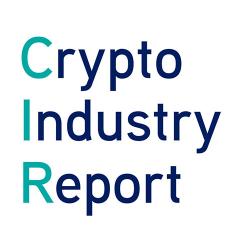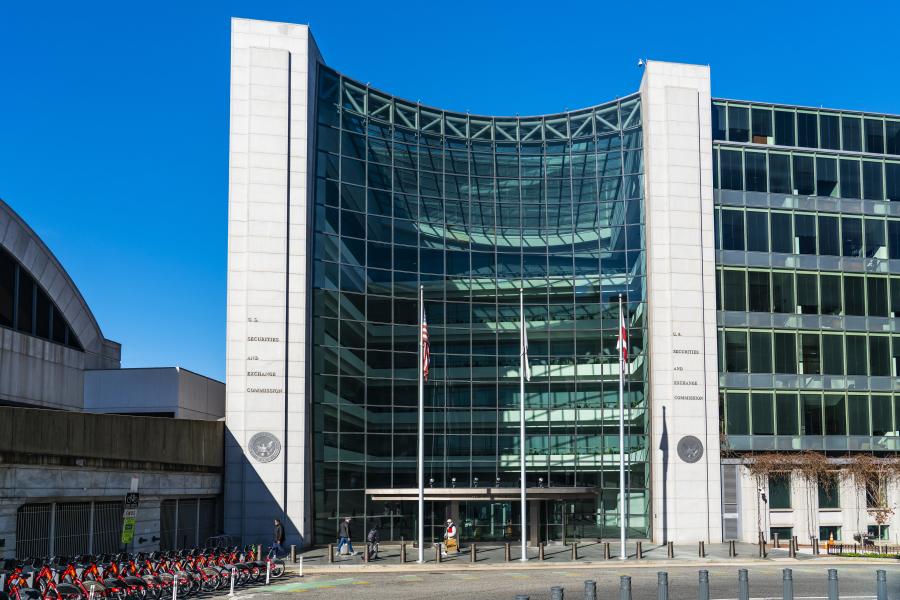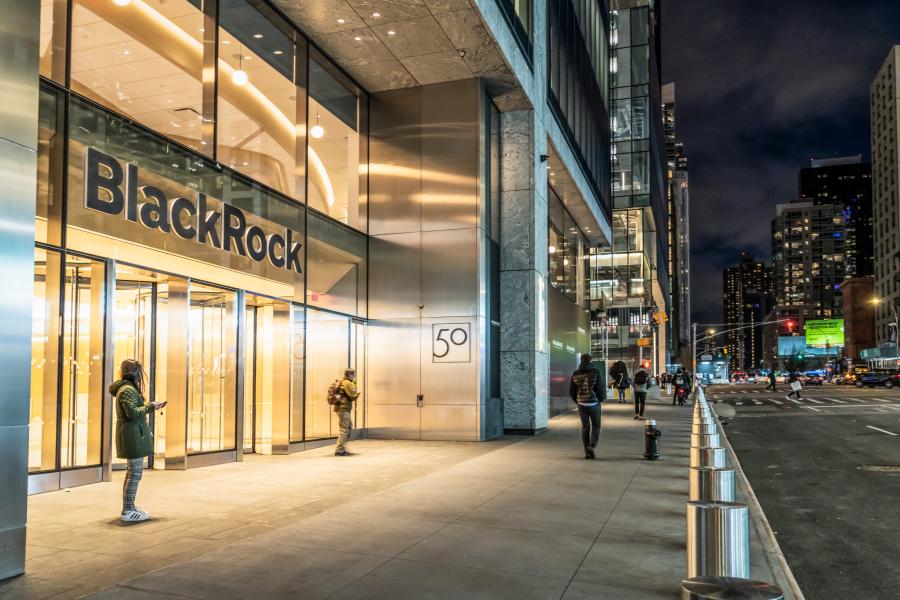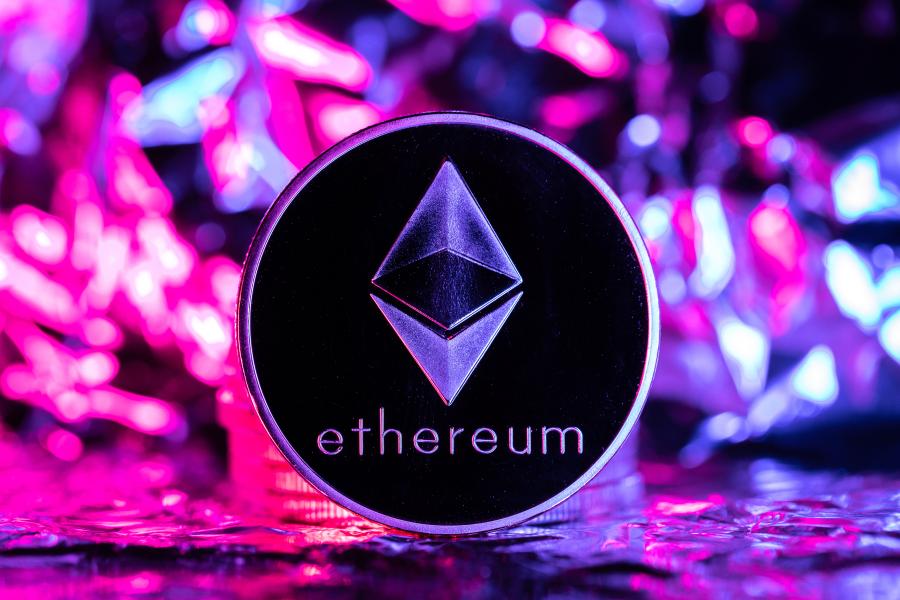The DCG, Genesis, and Grayscale Saga explained
This week, our blockchain experts assessed the following topics:
- The DCG, Genesis, and Grayscale Saga explained
- Banks are needed but cautioned by the US regulators
- What’s to come for Ethereum in 2023?
- Are Stablecoins on their way to becoming de facto CBDCs?
Our bi-weekly Crypto Industry Report provides you with valuable information on the global crypto industry – picked and analysed by our blockchain experts.
The DCG, Genesis, and Grayscale Saga explained
Crypto company Digital Currency Group (DCG) is reportedly under investigation by the SEC and the DoJ’s Eastern District of New York. Interestingly, a spokesperson of the company said they were unaware of the DoJ investigation. The company, which owns trading firm Genesis and crypto wealth management company Grayscale Investments, among other subsidiaries, has been undergoing financial troubles since the collapse of FTX. The issues are tied to the fact that Genesis was an FTX creditor.
Based on a disclosure made in November 2022, DCG and Genesis were involved in intercompany lending amounting to $2 billion. Regulators are now investigating the $573 million that Genesis lent DCG and a $1.1 billion DCG promissory note due in 2032.
Back in November, DCG's CEO Barry Silbert seemed optimistic that the company could weather the storm. Since then, however, things seem to have gotten worse because the company is under investigation and it has closed down its wealth management division called HQ this month. Moreover, Genesis sent home 30% of its staff this January after making a 20% employee cut in August last year.
On January 2, Gemini co-founder Cameron Winklevoss of the Winklevoss brothers increased the pressure on DCG through an open letter to DGC CEO Barry Silbert asking him to come to an agreement with Gemini creditors by January 8 regarding the $900 million Genesis owes the crypto exchange. At the time of writing, the Winklevoss brothers did not see any path forward as long as Barry Silbert remains CEO of DCG.
DCG’s liquidity issues are also affecting its subsidiary, Grayscale Investments, to the point that some investors of the Bitcoin trust GBTC, are running a campaign to change the management. The campaign to redeem GBTC also aims to minimise management fees and find a redemption option with the least impact on the Bitcoin market. More than 20% of GBTC shareholders had joined the campaign as of January 9. Nevertheless, sources knowledgeable about the inner workings of GBTC are doubtful that this campaign will have any effect. “Even if they had 90%, no investor can force a change,” they said.
Interestingly, a filing by the Morgan Stanley Europe Opportunity Fund disclosed that it has purchased $3.6 million worth of GBTC. This piece of news and Blackrock’s Bitcoin investment may have helped bitcoin to surpass $17,000 on January 8. Going forward, industry experts expect that DCG’s financial troubles could escalate and potentially even lead to a bankruptcy declaration. This would cause another major ripple effect following the FTX collapse.
Banks are needed but cautioned by the US regulators
The effects of FTX's failure also caused US crypto bank Silvergate to liquidate debt securities worth $5.2 billion at a loss of $718 million to cover a high withdrawal rate in Q4/2022. As a result, the company reported that its business shrank from $11.9 billion on September 30 to $3.8 billion at the end of 2022. Silvergate’s shares also lost 43% of their value on January 5. The company has said it will lay off approximately 200 employees. These outcomes have cast a shadow of doubt on the bank’s continued existence. After all, the bank is an important puzzle piece for the crypto industry in the US as it is one of the few institutions that enables crypto companies to have direct access to dollar liquidity at the Federal Reserve system.
Thus, the problems at Silvergate have led US regulators to issue words of caution on the threat cryptocurrencies pose to the banking system. A joint statement by the Federal Reserve, Federal Deposit Insurance Corp (FDIC), and the Office of the Comptroller of the Currency (OCC) indicates that regulators are worried about the safety of banking business models used by companies in the crypto industry. This is because banks holding and issuing digital assets are not observing safe banking practices.
“It is important that risks related to the crypto asset sector that cannot be mitigated or controlled do not migrate to the banking system,” US regulators said.
The statement from US regulators comes about three months after the oldest bank in the country, BNY Mellon, launched a digital asset custody service after receiving approval from the New York Department of Financial Services in October 2022. This approval contradicts the recent statement from regulators. Another bit of irony is that Custodia, a Wyoming-based crypto bank established by Wall Street veteran Caitlin Long, has been waiting two and half years for regulatory approval. Therefore, the policy director for the state’s senator Tyler Lindholm has described the situation as favouritism on the Fed’s part. In October 2022, Custodia raised $7 million through a financial round backed by Coinbase Ventures, Lemniscap, and Binance US. This new, highly anticipated project aims to decrease the bottleneck that crypto companies in the US currently have: accessing the federal reserve system directly.
What’s to come for Ethereum in 2023?
After executing a successful upgrade called the Merge on September 15, 2022, the Ethereum project is geared to roll out more upgrades in 2023. At the top of the to-do list for Ethereum developers is the Shanghai upgrade scheduled for March 2023. The upgrade will allow stakers to withdraw their staked ether, a feature that’s currently unavailable.
“Withdrawals are as good as done [and] should be mostly done by February/March,” Marius Van Der Wijden, an Ethereum software developer, said.
As a consequence, the Ethereum community is anticipating even more competition between liquidity staking derivatives (LSDs) following the Shanghai upgrade. Liquidity staking entails locking up crypto assets over a certain period of time while maintaining access to them. LSDs enable investors to get involved in DeFi without foregoing staking yields. LSD providers like Lido and Rocketpool are expected to start offering competitive returns after this upgrade.
Developers will then move to the sharding upgrade, an improvement that will enable the Ethereum blockchain to store more data. Sharding is a process of dividing the distributed ledger to increase its storage capacity. As a result, network congestion will decline. Sharding is also expected to solve Ethereum’s scalability issues by raising the number of transactions the blockchain processes per second. This makes sharding a crucial and highly anticipated update. The upgrade, which will take place in several phases, will ship sometime in 2023.
Account abstraction is another impactful path forward for Ethereum. This refers to a process of making Ethereum more user-friendly. Account abstraction will make Ethereum customisable (users will have the ability to secure their digital assets with the cryptography of their choosing) and resistant to quantum computers when they become more powerful in the future.
Upgrades aside, some people believe that Ethereum ecosystem projects will see further growth in 2023 because its foundations were put in place in 2022. For instance, the dominance of Ethereum layer 2 platforms increased, with Arbitrum and Optimism processing almost as many transactions as mainnet. This is also due to the fact that Ethereum was the largest blockchain by DeFi total value locked (TVL) in 2022, recording a TVL of $23.2 billion by the end of the year.
Are Stablecoins on their way to becoming de facto CBDCs?
Through a blog post, the Bank Policy Institute (BPI), a US financial advocacy organisation, has raised concerns that a segment of USDC reserves could be held at the Federal Reserve even though the issuer, Circle, does not have an account with the central bank.
The company behind the stablecoin, Circle, uses BlackRock to manage about two-thirds of USDC’s reserve assets. BlackRock established a money market fund called Circle Reserve Fund, which invests in Treasuries. 80% of these reserves are held in Treasuries. Money market funds can apply for the Federal Reserve reverse repo (RRP) facility, allowing them to lend money to the Federal Reserve overnight, and receive securities as collateral. The next day, the Federal Reserve returns the cash and the institutions return the securities.
According to the BPI, “the net effect of the cash flows is not dissimilar to depositing the USDC reserve cash at the Federal Reserve.” BlackRock has applied for an RRP facility. If approved, USDC could become what BPI calls a “backdoor CBDC.”
Coinbase CEO Brian Armstrong also sees USDC turning into a CBDC. In fact, he reckons it will be the de facto CBDC in the US. He also predicts that USDC will surpass USDT to become the top stablecoin by market capitalisation. Armstrong said this in November 2022 after the crypto exchange reported a rise in interest income from $32.5 million in Q2/2022 to $101.8 million in Q3/2022. The growth was attributed to the USDC holdings Coinbase has. Circle and Coinbase jointly own USDC through a consortium.
Some people think that CBDCs and stablecoins are two sides of the same coin while others don’t. This creates a lot of questions on whether the two can actually co-exist. While it’s hard to give a definitive answer on what will happen in the coming years, ultimately, users may adopt this new form of a digital currency — whether it’s a CBDC or stablecoin — when it checks all the major boxes: security, access, some degree of privacy, and scalability.
Share post

Auch interessant

To be continued: SEC pushes back at Coinbase
SEC pushes back against Coinbase's claim of no regulatory jurisdiction, stating the crypto exchange knowingly violated securities laws. Meanwhile, Gemini, owned by the Winklevoss twins, files a lawsuit against Digital Currency Group and CEO Barry Silbert alleging fraud and deception following the collapse of a lending venture. The Bank for International Settlements survey reveals that 93% of central banks are working on Central Bank Digital Currencies (CBDCs) which are seen as potential geopolitical policy tools and a challenge to the dollar's dominance. The race for a Bitcoin ETF intensifies, with BlackRock refiling its application featuring Coinbase as the market surveillance partner, as the Grayscale Bitcoin Trust's discount to net asset value narrows, potentially indicating the transformation into a proper ETF.

BlackRock fever: The ETF filing spree and institutional appetite
BlackRock filed for a Bitcoin ETF with the SEC, inspiring similar applications from firms like WisdomTree, Invesco, and Fidelity, and boosting Bitcoin's value. Traditional finance institutions such as Fidelity and Nasdaq are showing increased interest in crypto, with moves towards exchange and custody services. The defunct crypto exchange FTX, under new CEO John Ray III, is planning a potential revival after recovering significant assets. Meanwhile, the IMF is developing a global CBDC platform for cross-border transactions and DAI, a major stablecoin, is diversifying its backing from USDC to include real-world assets.

SWIFT explores blockchain interoperability
SWIFT has partnered with Chainlink to experiment with leveraging its infrastructure for transferring tokenized value across blockchain networks. The trials will address interoperability, regulatory challenges, and operational drawbacks for financial institutions in a blockchain environment. Chainlink will provide connectivity between private and public blockchains. SWIFT's findings will be published later this year.

China wants an Internet 3.0, while Hong Kong gears up for crypto trading launch
China is striving for advancement in Internet 3.0 technologies, with Beijing's white paper outlining plans to invest in the development of the metaverse and Web3 tech such as non-fungible tokens, but not cryptocurrencies due to the country's previous ban. Meanwhile, Hong Kong is launching its new crypto trading regulations, allowing retail investors to participate from June 1, 2023, with exchanges like Huobi Hong Kong beginning to offer spot trading to retail and institutional clients. Furthermore, the Cybersecurity and Technology Crime Bureau of the Hong Kong Police Force is launching a metaverse platform, 'CyberDefender', to educate the public about potential threats and crime prevention in the metaverse.

BRC-20: Innovating on Bitcoin is the new cool
A new Bitcoin “token standard” called BRC-20 is the hottest thing right now in the crypto space. It was introduced in March 2023 by a pseudonymous person called Domo. Bitcoin Request for Comment 20 (BRC-20) is an experiment that brings fungible tokens to the Bitcoin blockchain using the Ordinals protocol. Ordinals rely on ordinal theory, enabling the identification and tracking of individual satoshis within Bitcoin's existing supply, while also allowing them to be inscribed (associated) with data. Through this technique, satoshis (sats) are given ordinal numbers starting with zero. Anyone can add a script file to a sat to create and transfer a BRC-20 token on the Bitcoin blockchain. BRC-20 tokens are created using three functions: deploy, mint, and transfer.

US versus EU: Giants fighting for regulatory clarity
It is official now: The European Parliament voted overwhelmingly in favour of Markets in Crypto Assets (MiCA), legislation that will guide the crypto sector in all 27 European Union member states. 517 parliament members voted for it, while 38 voted against it. This approval makes Europe the first continent with comprehensive rules for cryptocurrencies. Also, it means that all EU member states will have unified crypto regulations. So, if a crypto business is approved in one EU member country, it could easily expand operations to another member state. The EU’s milestone was lauded by Binance as well as Kraken and Coinbase.

Ethereum: Another milestone reached with the Shanghai Update
On April 12, 2023, Ethereum successfully executed the planned Shanghai update also known as Shapella. The upgrade allows validators to unstake their staked ETH and withdraw their rewards, as well as staked ether if chosen. Now that another level of uncertainty has waned for the biggest smart contract blockchain, this new feature could attract more investors to stake their ether.

CFTC versus Binance:
Clash of the titans
The world’s leading crypto exchange by volume, Binance, alongside its CEO, Changpeng Zhao, and ex-Chief Compliance Officer, Samuel Lim, are being sued by the US Commodity Futures Trading Commission (CFTC).

Stablecoin USDC briefly lost its
peg. What do we learn from this?
One of the top stablecoins by market cap, USD Coin (USDC), de-pegged briefly from the US dollar on March 11 following the collapse of Silicon Valley Bank (SVB). Circle, the stablecoin’s issuer, held $3.3 billion in USDC reserves with the bank, which caused panic as investors rushed to withdraw their funds, assuming USDC could implode because of insufficient backing. However, the amount represented less than 8% of the stablecoin’s reserves.

Ethereum Shanghai upgrade pushed to April: Will there be too much selling pressure?
Ethereum stakers have been eagerly awaiting the Shanghai upgrade, which will enable them to withdraw their staked ether. Stakers’ funds have been locked since Ethereum introduced the proof-of-stake Beacon Chain in December 2020. The upgrade was originally slated to take place sometime in March but was pushed by about two weeks to April during a recent execution layer meeting.